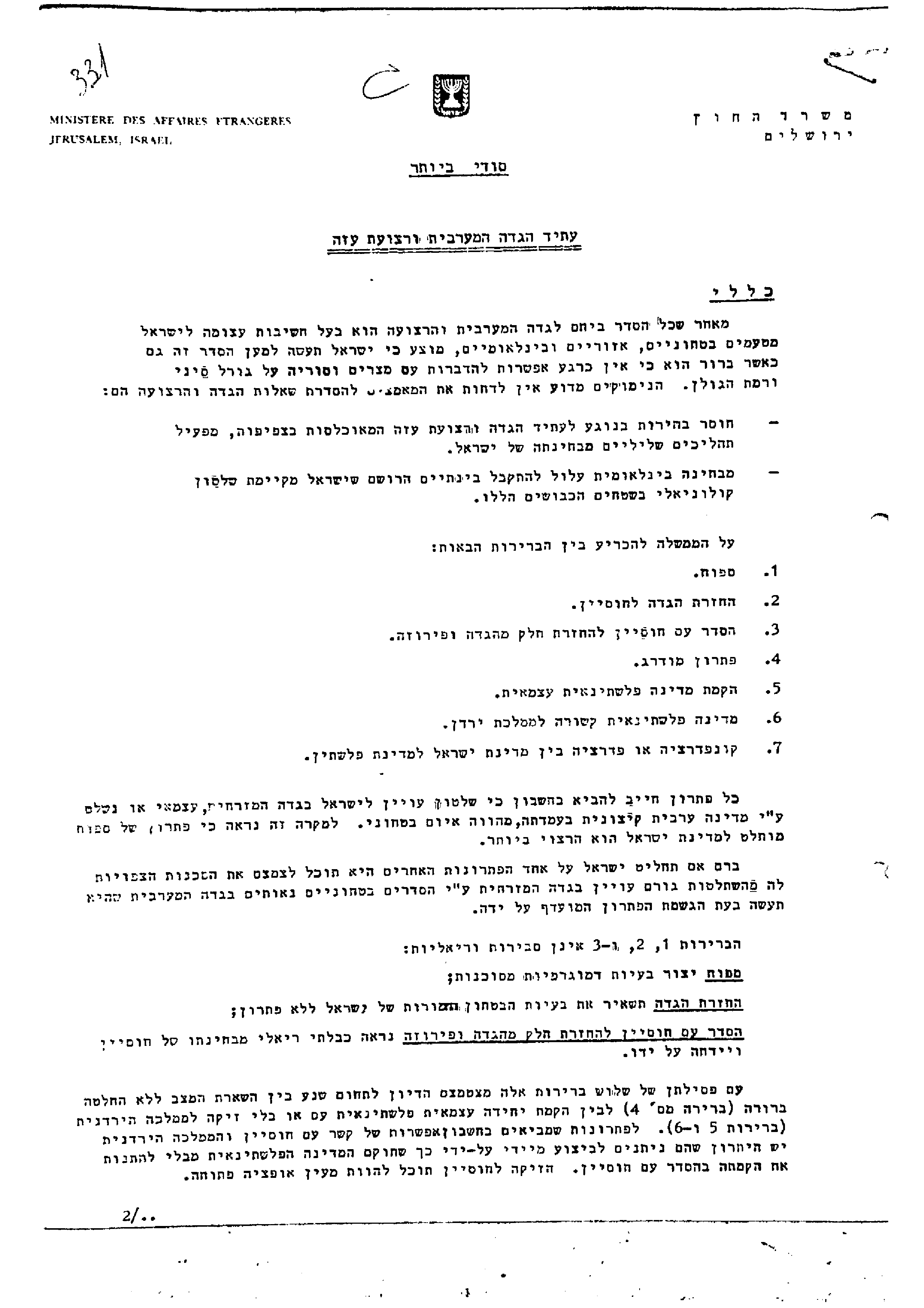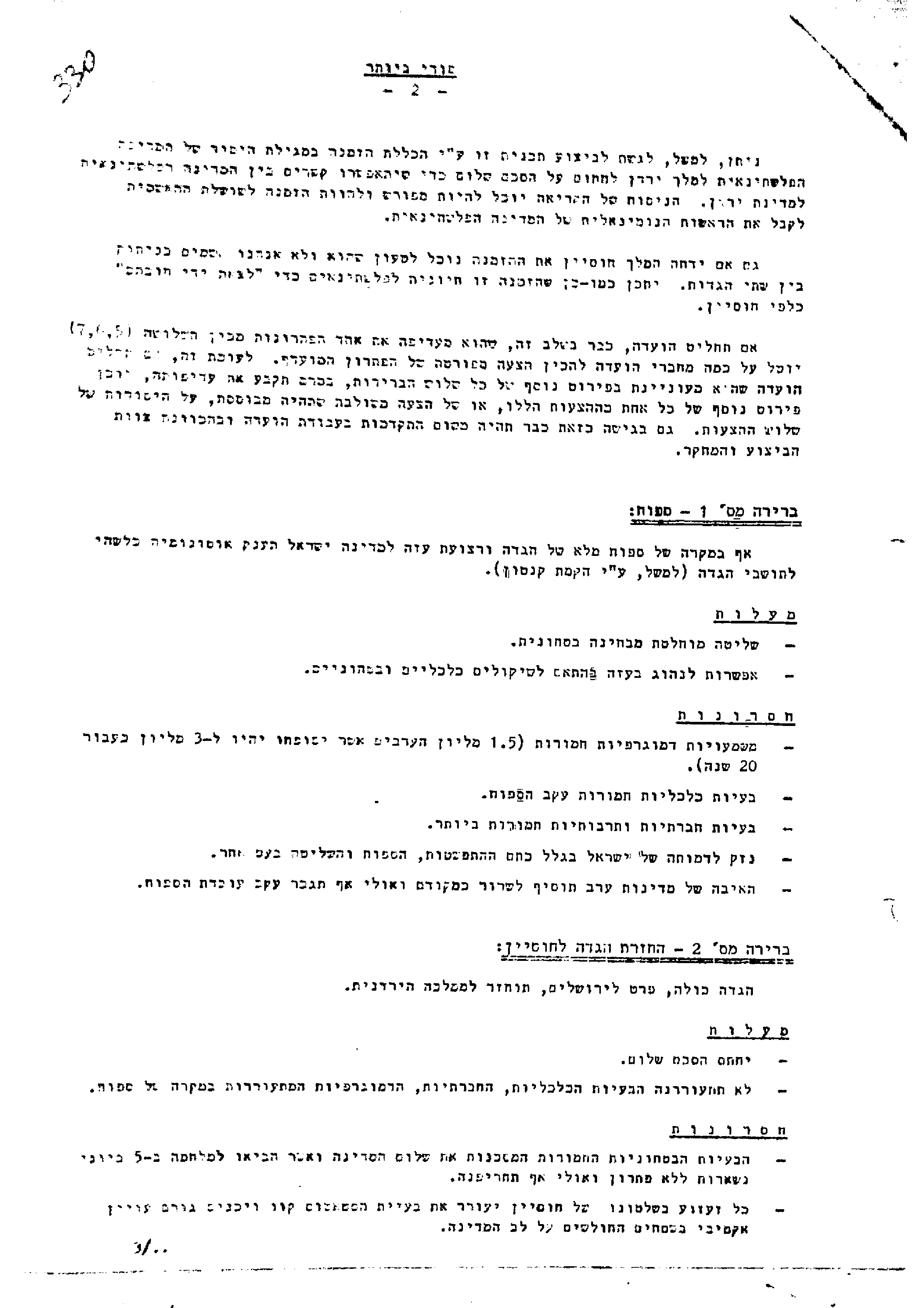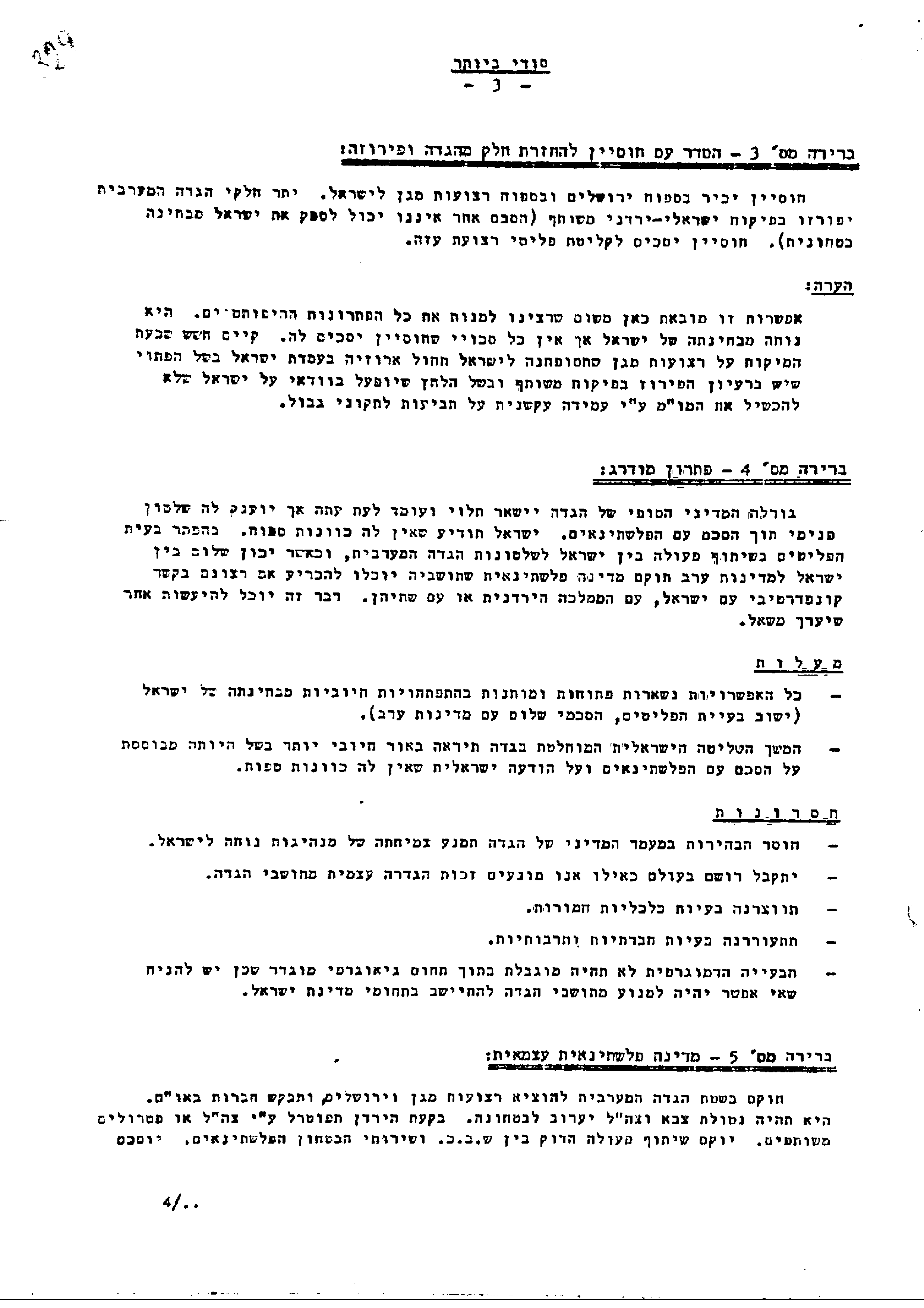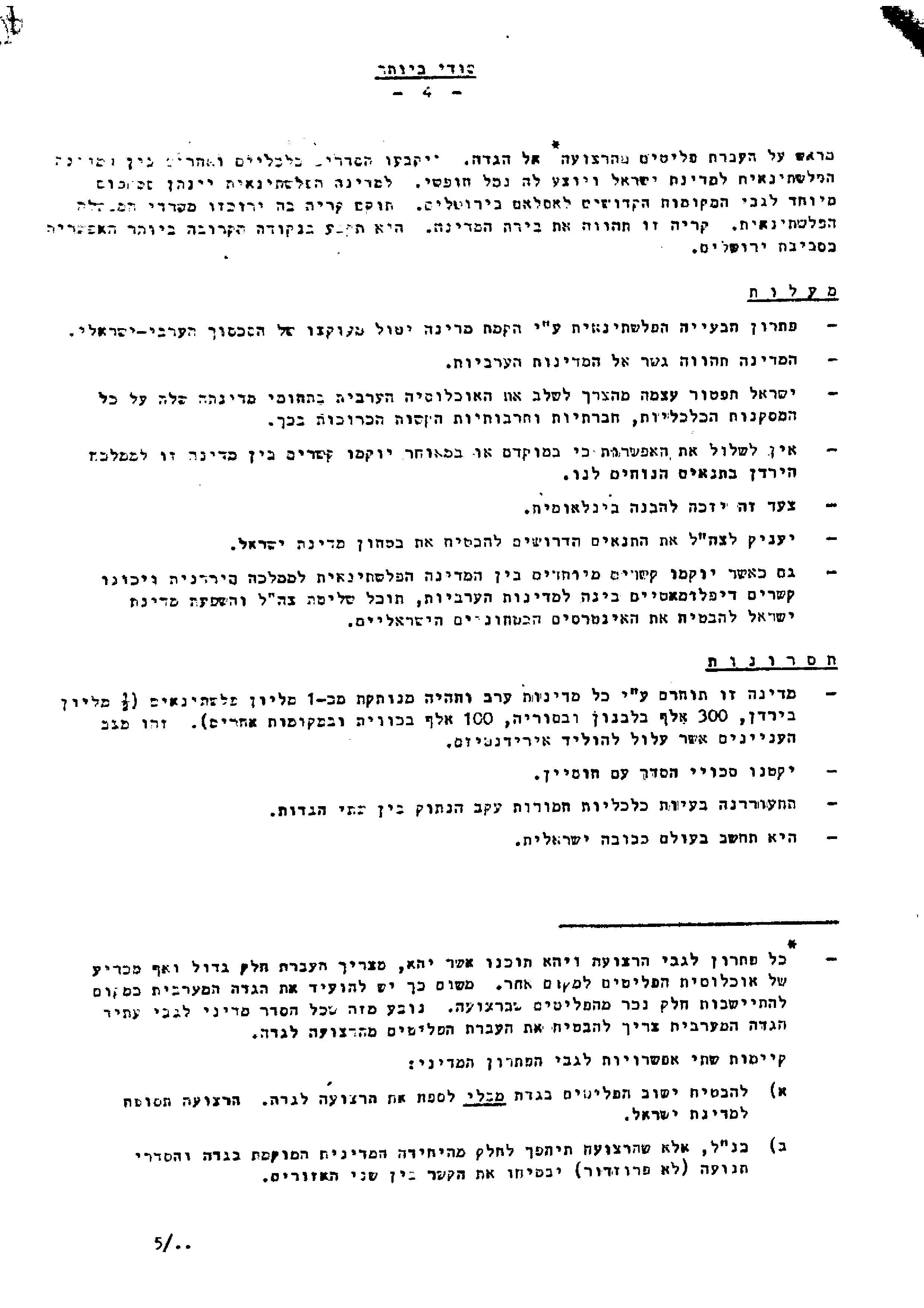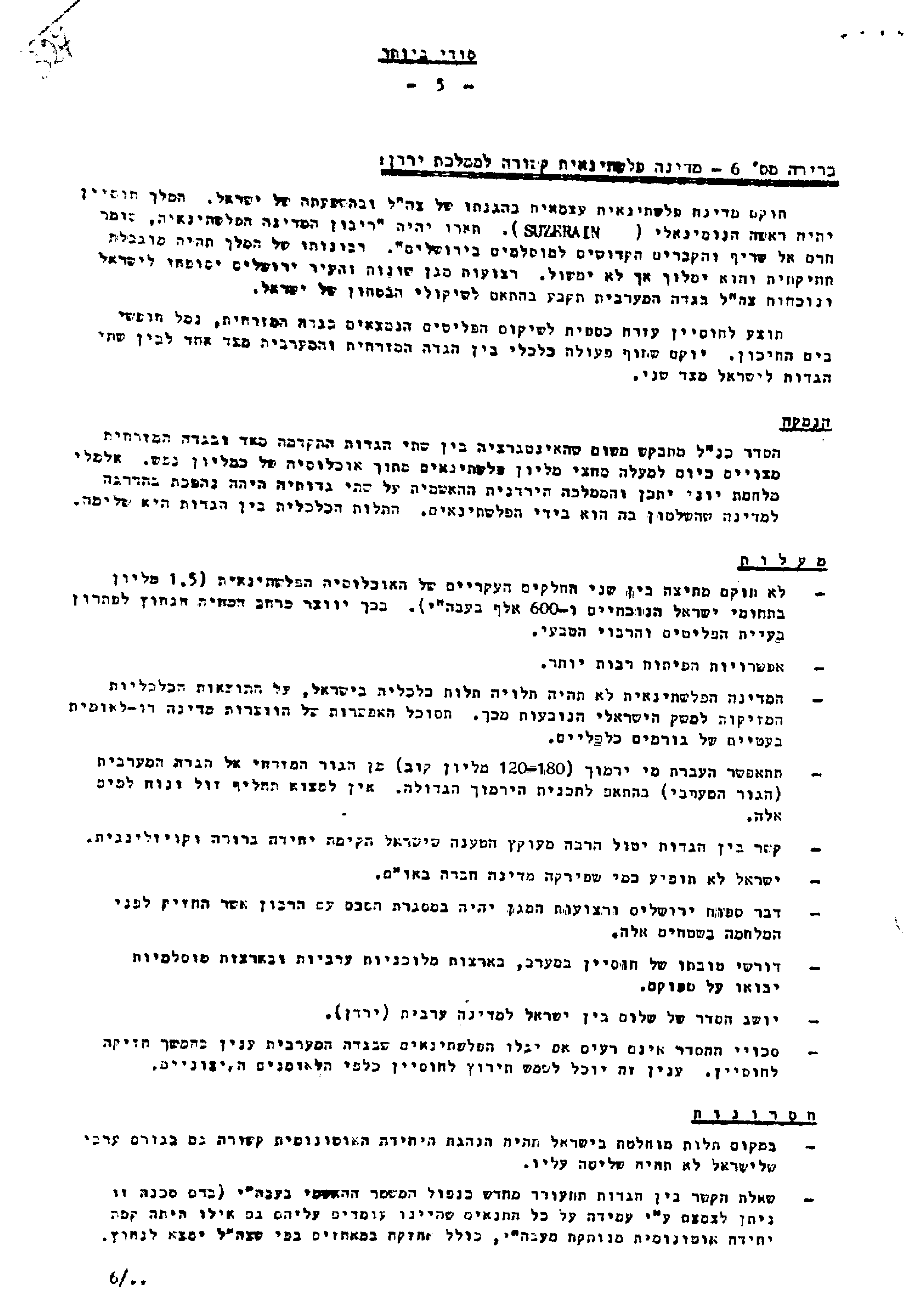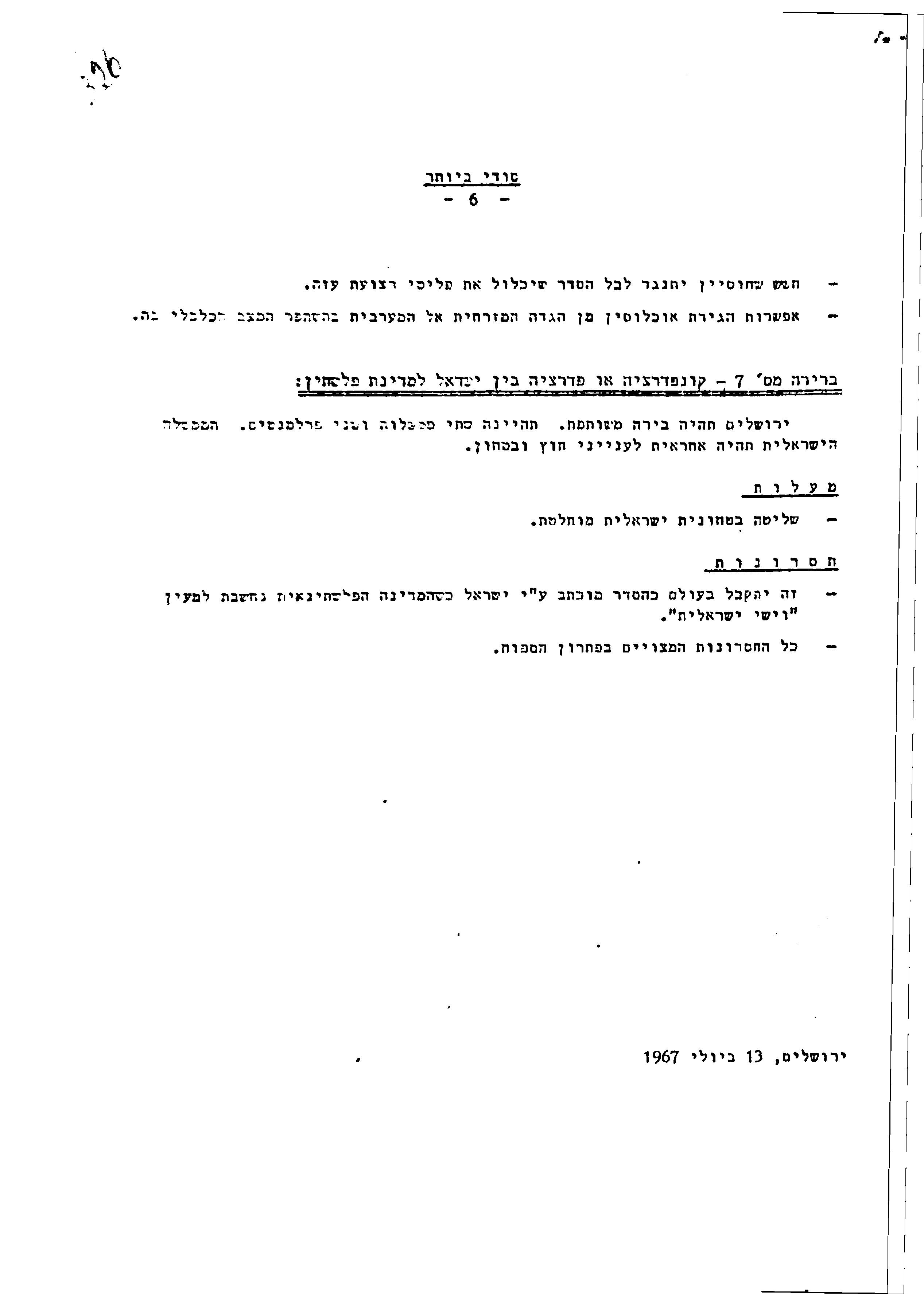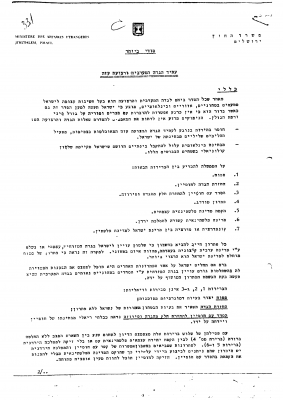A policy paper prepared in July of 1967 analyzes seven possible scenarios for the future of the West Bank and the Gaza Strip, from annexation to Israel to an independent State of Palestine.
Ministry of Foreign Affairs’ Mordechai Gazit and Shlomo Hillel wrote the paper to serve a discussion at the “West Bank Committee” headed by Prime Minister Office’s Director General Dr. Yaakov Herzog. The introduction notes that a policy on the future of the West Bank and Gaza Strip was an urgent necessity. The document’s authors provided two reasons why this was so urgent as to surpass the issue of the future of the Golan Heights and the Sinai Desert: First, any vagueness with respect to the future of these “densely populated” areas would result in “negative developments” for Israel. Second, “internationally, the impression that Israel maintains colonial rule over these occupied territories may arise in the interim”.
The document lists seven possibilities, two of which are thoroughly analyzed: an independent (though with no military force) Palestinian state whose capital would be at the closest possible location to Jerusalem, and a Palestinian state “connected to the Hashemite Kingdom of Jordan”, with the Jordanian king as sovereign.
Another option, under the heading “the graduated solution”, would be a decision to defer the decision on the final political status of the West Bank until there is peace between Israel and the Arab countries, at which point, a Palestinian state would be established and its residents would choose whether to enter into a confederation with Israel or with Jordan. In the meantime, the Palestinians would be self governing. Among the disadvantages of this option, the document lists the possibility that lack of clarity on the West Bank’s future would prevent “the emergence of leadership amenable to Israel”, the supposition that it would be impossible to prevent West Bank residents from taking up residence in Israel and economic, social and cultural issues.
Three more alternatives are reviewed, yet rejected as “unrealistic”: annexation (“would cause dangerous demographic problems”); returning the West Bank, with the exception of Jerusalem, to Jordan (“would leave Israel’s serious security issues unresolved”); and returning some of the West Bank to King Hussein, demilitarizing the returned portion, and transferring the refugees from the Gaza Strip to Jordan (“no chance for agreement on Hussein’s part”).
Another option reviewed was a federation or confederation between the State of Israel and a Palestinian state, which would have two governments and two parliaments. Jerusalem would be the joint capital and control over security matters and foreign affairs would remain in Israel’s hands. “Complete Israeli control over security matters” was this proposition’s virtue, according to the MFA. Its faults: “This would be received internationally as an arrangement dictated by Israel, with the Palestinian state acting as an Israeli Vichy state”. This option also featured all the disadvantages identified for the annexation option.

